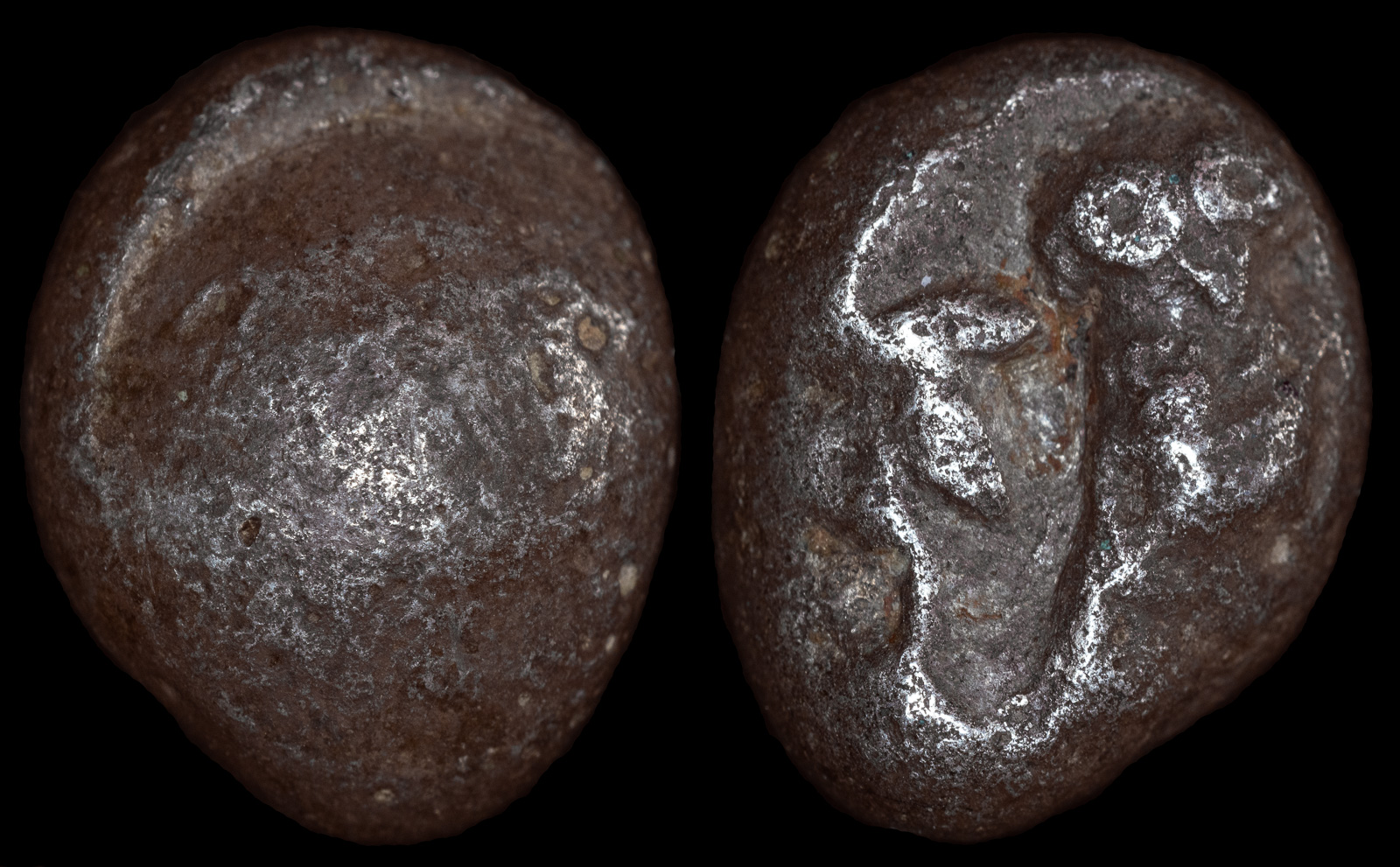
Edom (Idumaea)
4th century BCE
AR Quarter Shekel – Drachm 11mm, 3.61g
Imitating Athens. Helmeted head of Athena right, degraded to blank dome-like surface /
Owl standing right, head facing; olive spray and crescent to left.
GTvA 12–20; HGC 10, 617
Edom has an extremely long history. It was attested in ancient Egyptian sources and, after conflict with the Babylonians and then the Nabataeans, they settled south of the Kingdom of Judah.
This coin, like that of many others minted during this time in the region, imitates the famous owl currency of Athens. The obverse of the coinage depicts Apollo, though for some reason nearly every die was eventually worn down, so it’s no longer visible. This coin follows the norm. Perhaps it was for religious reasons, since the obverse dies were obviously kept in good shape, but we cannot know for sure.
Some sources list the Edomites as descendants of Esau. The warred between Judah for some time until they were eventually conquered by them under John Hyrcanus I. Numerous ancient sources, including Josephus, document that he forcibly converted the Edomites to Judaism, though this is disputed since the act is against Jewish law.
King Mesha of Moab references Edom in the Mesha Stele as an established neighboring kingdom, often involved in regional conflicts with Israel, Judah, and Moab.
King Kaus-malaka is in power in Edom.
Edom becomes a vassal state of the Neo-Assyrian Empire under Tiglath-Pileser III, who expands his control in the Levant, forcing Edom to pay tribute.
King Aya-ramu is in power in Edom.
King Kaus-gabri is in power in Edom, according to an Assyrian document.
Following the Babylonian conquest of Jerusalem, Edomites are said to have supported Babylon, leading to tensions with the Jews who flee southward. Many Edomites settle in the Negev.
Edom (by now Idumea) comes under Ptolemaic rule.
During the Maccabean Revolt against the Seleukids, tensions increase between the Jewish population and Idumeans, who are caught between the Seleukids and the Hasmoneans.
John Hyrcanus I, the Hasmonean ruler of Judea, conquers Idumea and forcibly converts the Idumeans to Judaism. Idumea is formally integrated into the Hasmonean kingdom.
Herod the Great, of Idumean descent, is installed as king of Judea by the Romans. His rule brings stability and extensive building projects in the region, including in Idumea.
Judea, including Edom, becomes a Roman province. Caesarea Maritima replaces Jerusalem as the capital.